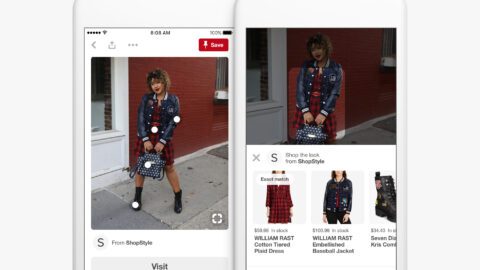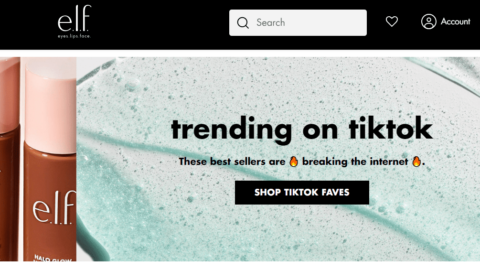Social media has an increasingly critical role in e-Commerce as word-of-mouth and peer sharing help retailers extend brand outreach and increase sales. According to the 2011 Social Shopping Study, recently released by PowerReviews and the e-tailing group, shoppers spend 75% of their time online conducting research. This presents an opportunity for retailers to provide in-depth, relevant information that will cater to customer needs and preferences, and increase conversions.
Delving more deeply into this topic, Retail TouchPoints recently conducted an exclusive Q&A with PowerReviews VP of Marketing, Nadim Hossain, to discuss the study, connecting “community” to commerce, and what every retailer can learn from Amazon.
Retail TouchPoints (RTP): The study points out the volatility of e-Commerce in 2011 with a multitude of dynamics in play from social media and community to mobile. What are some of the action items that retailers can implement in order to be more strategically aware of these changes?
Nadim Hossain: The study confirms that e-Commerce is more dynamic than ever. To understand and take advantage of these trends, retailers should take these three actions:
1. Stay current. Play with social tools yourself, as a consumer. Read up to learn from others’ experiences and from expert opinions. If you’re reading this, you’re already on your way.
2. Test and experiment. It’s still early days for social, and the winners will be those who can quickly learn what works for their business. Whether it’s integrating the Like or +1 buttons onto your site, or a full-blown Facebook Connect app, there’s no substitute for experimenting and seeing what works.
3. Focus on results. Retailers should keep the end goal in mind. Universally, that’s greater sales, driven primarily either by increased traffic or higher conversions. Prioritize initiatives that support those goals: increase organic traffic through better SEO, drive more Facebook-referred traffic through greater sharing, and generate higher conversions by presenting consumer reviews and Q&A on the product page.
Increasing your fan count is also a legitimate goal if it’s in service of commerce. To keep fans engaged — and turn them into buyers — you have to share interesting content and run regular promotions and contests through your fan page.
RTP: According to the survey, shoppers spend most of their time conducting research. Acknowledging that the web provides detailed information arguably better than other channels, how can retailers cater to shoppers’ desire for information?
Hossain: Indeed, our study found that 75% of online shopping time is spent on research ― and the web offers many places to do this research.
As a retailer, why not have the consumer do this research on your site? That increases the likelihood they’ll buy something from you. And consumers value the opinions of other people like them ― that’s why 90% indicated that reviews have an impact on their decisions, the majority (60%) indicating reading reviews is the most important factor.
So at an absolute minimum, retailers should ensure they offer reviews and ratings on their sites. Question and answer capability can also be a very powerful form of consumer insight in driving buyer confidence and increasing conversions.
But all this pre-supposes that the consumer even comes to your site. Most shopping journeys begin on a search engine, usually Google. So in order to be found while the consumer is researching or shopping, you have to have decent SEO. User-generated content ― such as reviews and Q&As ― is keyword-rich, so that’s one way to boost this. Ensuring you provide search engines with social signals, i.e., Like, +1 and Tweets, is another.
RTP: The report notes that consumers are gravitating to powerhouses like Amazon, regarded as “the defacto retailer for comparison shopping.” What are some of the “lessons learned” that retailers can implement to foster a streamlined path-to-purchase?
Hossain: I’ll point out two things that Amazon does well. The first is that all of its product page content is indexable by search engines. Since most shopping journeys start with Google, this is critical.
How do they do it? Well, most of the text on their product pages is consumer-generated ― in the form of reviews ― and Amazon makes sure that Google can actually see that content and give them credit for it in search rankings.
This might sound basic, but 60% of the Top 20 retailers fail at it. Just look at the cached version of a product page from Office Depot, Best Buy or Dell ― the review content is nowhere to be seen. And this is what Google sees! They’ve chosen to render that content in a way that’s invisible to Google. You can bet Amazon is not doing that.
Frankly, I’m not sure what accounts for this epidemic of SEO-illiteracy. But you can get a leg up by making your most valuable product page content indexable by search engines. It’s an easy fix if you use well-built technology.
The second thing Amazon does well ― and they’ve been experimenting for a while ― is social. They’ve built a rich, two-way Facebook Connect integration that pulls in your friends’ birthdays and Likes into your Amazon account. (To see this in action, you’d login and click “[Yourname]’s Amazon.”) From this information, Amazon is able to infer which products you could be interested in and make more informed product recommendations.
Obviously, 99.9% of retailers don’t have the engineering talent that Amazon has. That’s where tapping into a social commerce network like PowerReviews can really help. We’re powering over 5,500 web sites, so we can afford to innovate on social commerce at what we’d argue is a faster pace than Amazon.
RTP: According to the report, there appears to be a divide between community and commerce, as just 29% of respondents take advantage of social sites for research. With that said, what are the most important components of an effective social strategy?
Hossain: Social isn’t primarily about research in the traditional sense, i.e., users don’t log into Facebook looking to research an upcoming purchase (though we find that users do ask their friends for recommendations quite often).
Instead, social is about product discovery ― finding out about a product when you had no idea it existed. So your goal isn’t to have someone search Facebook for your product. Rather, it’s to have a happy customer share her glowing opinion about your product ― and a link to the product page and an attractive photo ― with her hundreds of friends.
Forever21 and Etsy do this well, and they’re seeing upwards of 15% of their traffic referred from Facebook, exceeding their Google referrals. Even Amazon saw 8% of its traffic come from Facebook. The average is probably in the 1-5% range, but this number will only grow.
I think three things are important in putting together a social strategy:
1. Clear goals and objectives. Are you trying to drive higher sharing in order to get new referral traffic? Then you need to do things that will drive that behavior.
2. Interesting content and offers. You have to create content that’s interesting and will spur people to share it with others or take action themselves. It’s important to not always be trying to sell something. For example, REI posts interesting pieces about outdoor activities. We know from the 2011 Shopping Study that consumers care a lot about getting a deal ― so be sure to offer them special discounts to reward them for their higher level of engagement. Finally, contests are always a good way to leverage Facebook’s community. For example, Advance Auto Parts runs a great “Name that Part” contest, typically showing a close-up of an auto part only an enthusiast would recognize (Monday’s “cylinder head valve spring” was good for almost 900 Likes and comments.)
3. Low barriers to sharing. Social is driven by users choosing to share things with their friends, so you need to make it as easy as possible to do that. In fact, in moving from the traditional Share to a newer Facebook Connect integration, we found a fivefold increase in sharing behavior. Another effective tactic is to incorporate lightweight Like and +1 buttons.
Nadim Hossain (@NadimAHossain) is VP of Marketing at PowerReviews, a social commerce network with more than 35 million products and services across 5,500 web sites.












